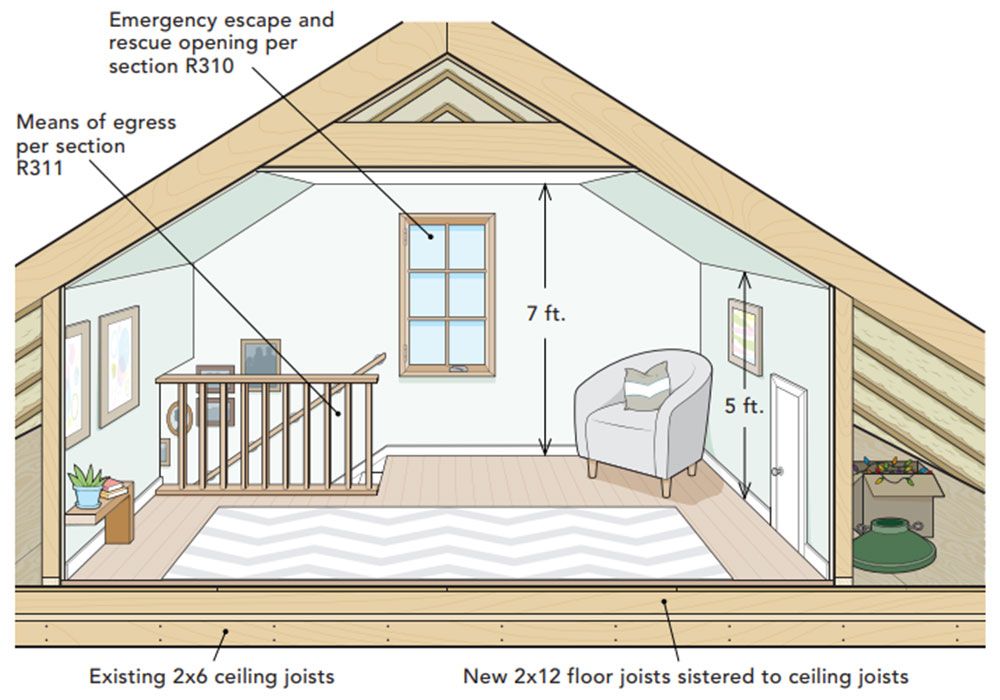Builders and Contractors, get ready to unlock the secrets of safe and code-compliant attic transformations! As you contemplate converting that overlooked attic space into a functional oasis, let’s delve deeper into the essential requirements and additional insights for a successful project.
Space Allocation: The 70 Square Feet Mandate
Code requires that a habitable attic have at least 70 square feet of total space. The 70 square feet rule isn’t just about meeting a bare minimum. It’s about creating a livable space that adds value and comfort to a home. Consider factors like layout efficiency and the potential for storage solutions to maximize the utility of every square foot. The goal is not just compliance but crafting a space that homeowners will cherish.
Headroom Heights: Striking the Balance
Beyond the basic requirements, consider the impact of varying ceiling heights on the overall design. Cleverly integrating areas with different ceiling heights can add character to the space. Use higher ceilings strategically for key living areas, like a lounge or kitchenette, and lower ceilings for cozy nooks or storage. This flexibility within the code allows for creativity while maintaining the core principles of safety and functionality.
Remember, a well-designed attic isn’t just about meeting code; it’s about creating a space that enhances the overall living experience.
The minimum ceiling height over that space is 5 feet, but at least 50% of the ceiling must be 7 feet or higher.

Decoding Roof Structures
When dealing with older homes lacking engineered trusses, understanding the existing roof structure becomes paramount. Conduct a thorough assessment to determine the feasibility of the attic conversion. This involves evaluating load-bearing capacities, existing framing, and potential modifications required for compliance.
Ventilation and Insulation
While code compliance often focuses on structural elements, don’t overlook the importance of proper ventilation and insulation. Adequate ventilation helps control temperature and moisture, ensuring a comfortable and healthy living environment. Additionally, proper insulation not only contributes to energy efficiency but also plays a crucial role in meeting code requirements. Understanding these aspects is key to creating attics that are not just compliant but also energy-efficient and comfortable year-round.
If you’re eager to deepen your understanding of US Residential Building Code compliance, our Construction Code Course is your roadmap to expertise. Beyond the basics, this course delves into nuanced topics, providing you with the knowledge and skills necessary to navigate the complexities of construction codes confidently.
Contact us at (240) 231-0313 to enroll and stay at the forefront of industry knowledge.
As builders and contractors, you play a pivotal role in shaping the homes of the future. Share this blog with your network, and let’s collectively elevate the standards of attic transformations.
By combining creativity with a solid understanding of code requirements, we can build not just spaces but homes that stand the test of time.







